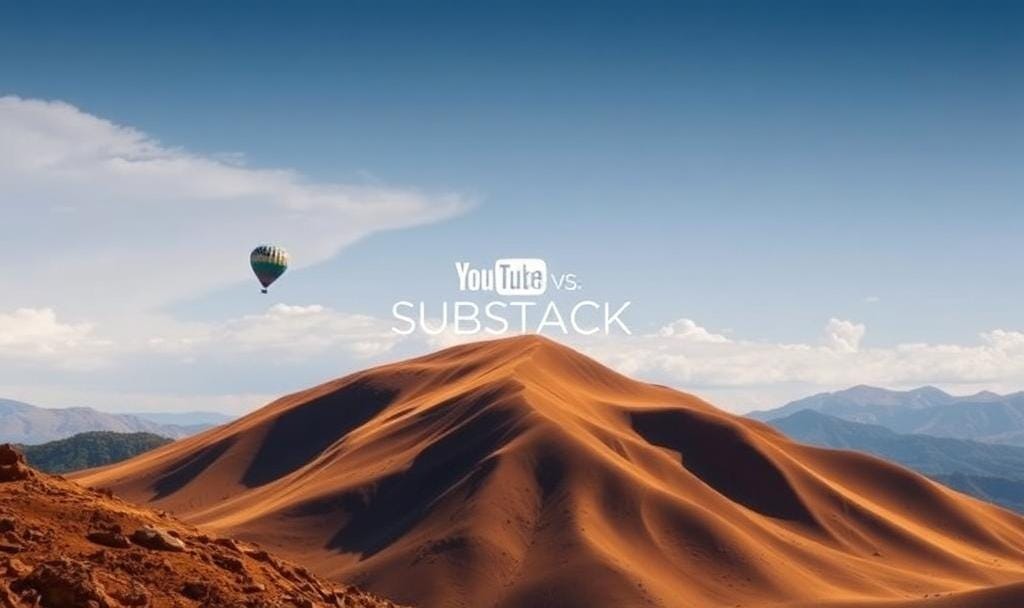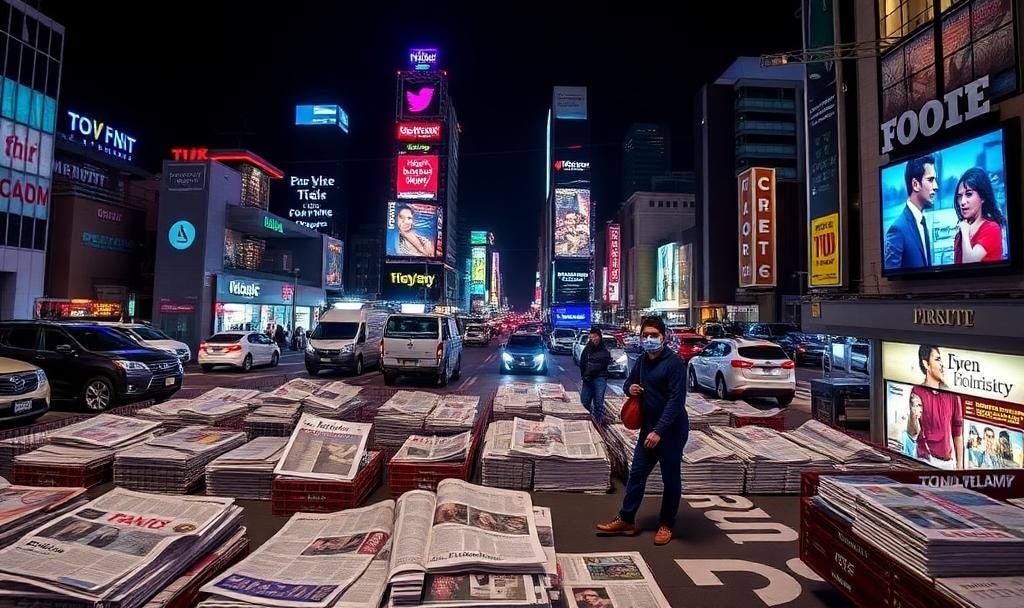For anyone who’s ever worked in media and whispered, “What the hell are we doing?” out loud. Welcome to Speaking of Which. I’m a news media survivor-in-training (CNN, NowThis, BET) turned independent strategist and launched this newsletter to track the chaos and reimagine the future of journalism—from the rise of the creator economy to the slow collapse of old institutions. If you’ve ever been caught between a brilliant story and a broken algorithm, you’re in the right place.
Why big-name journalists are choosing Substack over YouTube
Chris Matthews is on Substack now.
Jim Acosta too. Joy Reid’s been dabbling. Mehdi Hasan’s already launched, with a clean design and a $500 founding tier. These are people who, until pretty recently, had the full weight of a network behind them. They had producers, bookers, studio lighting. Distribution wasn’t something they had to think about. It was baked in.
So why are they showing up on a platform known mostly for newsletters?
Not YouTube. Not some streaming spin-off. Not even podcast-first.
Just: Substack.
It doesn’t feel intuitive at first. Substack still reads as writer territory. People think of it as a space for opinion columns, personal essays, politics, criticism. Not for former anchors or broadcast veterans. And yet, this is where they’re showing up.
The short answer is: it’s easier.
The real answer is: it’s ownership.
YouTube is massive—but it’s crowded and algorithmic. You can spend hours producing a video and it disappears if you didn’t nail the thumbnail. Unless you already have an audience, the system doesn’t reward you. And the broadcasters coming into this new era? They don’t want to relearn a platform. They want to bring their audience with them.
Substack makes that possible.
You get emails. You get a list. You’re not chasing trends, you’re talking to people who opted in. It’s more direct. It feels calmer. You’re not constantly performing for the feed.
That said—there’s a downside to the big names entering the space.
When someone like Mehdi launches with a high-dollar tier and a press push, it changes the temperature. Smaller creators—people building from the ground up, often covering underreported beats or experimenting with format—can’t compete with that kind of spotlight. They don’t have it. They shouldn’t have to.
And this isn’t just about scale—it’s about equity. Because let’s be real: the journalists being laid off right now in the biggest numbers are not network veterans with agent contacts and media buzz. They’re younger. They’re freelancers. They’re overwhelmingly journalists of color. Especially Black and brown reporters, many of whom were doing the toughest and most thankless work—local accountability stories, grassroots movement coverage, stories that took time. Those are the people being told, implicitly, “Go build your own audience.” Without institutional support. Without a war chest. Without a legacy platform trailing behind them. Meanwhile, two clicks over, someone’s repackaging cable monologues with a paywall and a newsletter logo.
So when these high-profile names move into so-called “independent” territory, they bring gravity with them. And sometimes that gravity pulls all the air out of the room.
Substack starts looking less like a network of fresh voices, and more like a boutique showroom for people who already had followings. If you’re an under-the-radar journalist just trying to hit 500 paid subscribers to survive, good luck getting recommended next to someone whose Wikipedia page is older than your student loans.
And yet, here we are.
Choosing this anyway.
Because even with all that? Substack still feels closer to the thing we were chasing. Not scale. Not “reach.” But something real. Something you can build on. A list you don’t have to rent. An audience that doesn’t vanish with a shadowban. A place to talk without chasing the next engagement high.
We’re not there yet.
It’s not perfect.
But if you’ve ever made something that mattered and watched it get crushed by the feed—this? This feels like a better deal.
Not louder. Just clearer.
And sometimes, that’s enough to start.
Where media execs, washed-up shows, and startup fever dreams all come to party.
Some of the headlines you might’ve missed because you were busy trying to make TikToks that don’t feel cringe. I round up what matters (and what just made me blink twice) across media, tech, and culture. Spoiler: everyone’s moving to Substack, and every platform is pivoting again.
What was Quartz?: A lesson in brand drift and venture delusion.
Nickelodeon on YouTube?: Paramount+ who?
Every marketing channel sucks right now: Yes, even LinkedIn.
Henry Blodget returns via Substack: Because legacy is a vibe.
Chris Matthews relaunches Hardball: This time, he’s his own boss… and his own intern.
Mi:nu:ti:ae lives on: Global art project quietly reminds us that the internet can still be good.
The algorithm didn’t boost these. But I will.
These are the stories that stuck with me—deep dives, human-first reporting, and pieces that made me remember why this work still matters. If we’re going to rebuild trust in media, it starts here.
Iowa Youth Never Received Access to $15M for Rehab Services
Jasmine Vaughn-Hall Speaks with Freddie Gray’s Brother
Aaricka Washington on Black Altadeans Rebuilding After LA fires
I believe the future of media lies in collectives, not conglomerates. I’m helping build a decentralized newsroom where creators can thrive, collaborate, and actually get paid. Still booking big interviews at CNN. Still betting on independent voices. Still dodging Slack notifications like a pro. If you’re trying to do real work in a broken system, I’ve got space for you.



